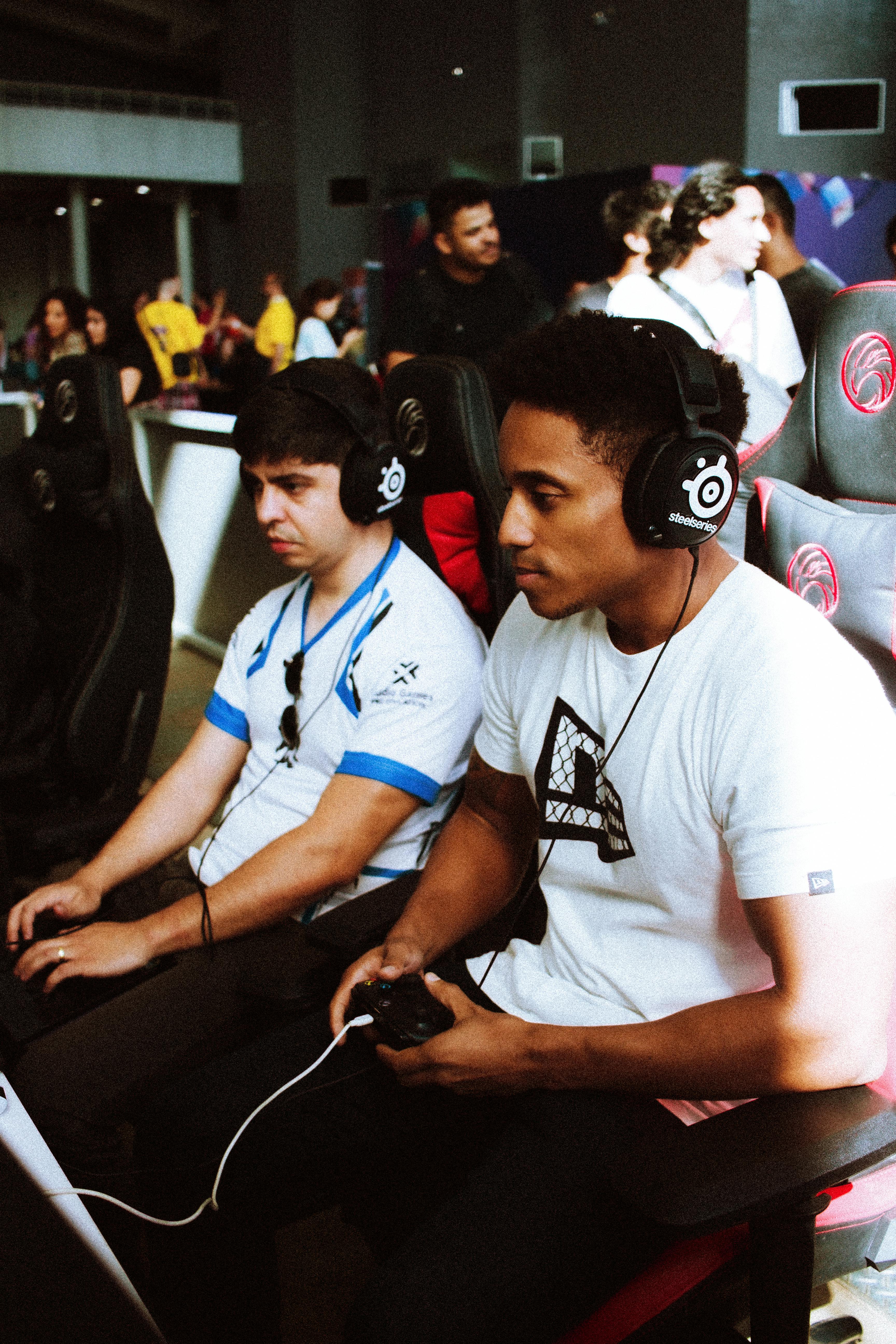South Korea’s Breakthrough Esports Models: Securing Global Gaming Success
Back in the early days—somewhere around 2005—people like me (gaming consultants, lifelong players, and reluctant business strategists) were still trying to figure out exactly why South Korea was so far ahead in esports. Was it just faster internet? Cultural quirks? Or did their business strategies actually work differently? What really strikes me now, having spent over a decade watching the evolution up close, is how Korean esports experts didn’t just build a thriving local scene—they reinvented the global gaming industry’s approach to revenue, sustainability, and fan engagement. And, interestingly enough, their breakthrough business models are finally being dissected and emulated by Western companies looking for lasting success1.
Korean Esports Origins & Global Impact
Let me start at ground zero: South Korea’s esports culture didn’t emerge randomly or overnight. It’s tempting to say “lightning in a bottle,” but it was more like a slow-burning fuse. Years before the western gaming world caught on, Korean society was already seeing PC Bangs (i.e., internet cafes) pop up on nearly every corner, creating a grassroots environment that turned games from isolated hobbies into shared national obsessions2. I remember one night in Seoul in 2012—a weekday, rain pouring, and yet the cafe I visited had every seat filled, mostly with teenagers and twenty-somethings, locked in heated matches until 4 AM. This was not just about recreation; it was a proving ground for future esports stars.
Did You Know?
South Korea was the first country to recognize esports as an official sporting discipline, launching the Korea e-Sports Association (KeSPA) way back in 2000. This early institutional support gave rise to national tournaments broadcast on mainstream TV, a move that made esports culturally and economically viable long before similar moves happened elsewhere3.
Breakthrough Business Models Unveiled
What excites me the most—and I have to say, this still feels radical even now—is how Korean experts mapped out the long-term monetization of esports. Unlike traditional sports, they weren’t content to rely on ticket sales or the occasional sponsorship. Instead, they engineered multi-layered business models connecting digital platforms, merchandising, media rights, and direct fan monetization4. In simpler terms? They didn’t just put on a show; they built ecosystems where fans could spend money across a spectrum of experiences, products, and virtual goods.
“South Korea’s innovation in esports monetization emerged from a deep understanding of how fans interact with entertainment and tech. The key was letting audience participation drive both cultural relevance and business growth.”
One quick clarification—these business models aren’t static, and my thinking on what works “best” has definitely evolved. Actually, let me step back: I used to believe the magic was all about digital ad revenue. These days, microtransactions, exclusive experience memberships, and transmedia content have stolen the spotlight, creating more sustainable long-term income than ever before.
- Integrated online-offline event cycles for year-round fan engagement
- Freemium content layers driving large-scale user acquisition
- In-game purchases (cosmetics, virtual goods) as primary revenue
- Brand partnerships and co-marketed products launched through esports teams
Speaking of updates, the last World Cyber Games in Busan made me reconsider just how important local culture is to sustaining global relevance. Korean game publishers and tournament organizers seem to have a sixth sense for balance—avoiding oversaturation and keeping fan bases excited but never burnt out5. Anyone else notice this in recent years?
Advanced Revenue Streams That Work
What really sets South Korea apart in esports, at least for me, is how integrated their revenue streams have become. It’s one thing to sell tickets or digital passes—it’s another to blend business approaches that keep fans spending, returning, and advocating for the brand year-round. I’ll be completely honest: my early strategies for clients missed the mark on that “integrated” side. Now? The Korean playbook has pretty much become required reading for anyone seriously interested in esports business sustainability6.
| Revenue Model | Primary Mechanism | Sustainability | Global Transferability |
|---|---|---|---|
| Microtransactions | In-game purchases (skins, boosts) | High: Recurring & scalable | Strong: Used worldwide now |
| Membership Subscriptions | VIP fan clubs, seasonal passes | Medium-High: Loyal retention | Moderate: Cultural tailoring needed |
| Media Rights | Streaming, syndication deals | Medium: Varies with audience size | Strong: Widely adopted |
| Branded Merchandising | Team apparel, collectibles | Medium: Dependent on brand relevance | High: Rapid adoption globally |
Some of you are rolling your eyes right now—“microtransactions aren’t new!” True, but the way Korea synchronizes microtransactions with live events, media partnerships, and real-time fan voting creates network effects that most Western companies can only dream about7. Case in point: the LCK (League of Legends Champions Korea) live voting system, where fans influence MVP awards (not just passively watch) and receive digital perks. That is next-level fan engagement—and direct revenue.
“When evaluating South Korean esports, the fusion of culture and commerce becomes obvious. ‘Fan-first’ product design drives continual business reinvention—even as games change and new titles dominate the narrative.”
Cultural, Economic, and Regulatory Insights
Let’s talk context for a second: South Korea’s unique media ecosystem, government support, and education policies all feed into its success. According to government analysis8, esports now contributes over $1.5 billion to Korea’s annual GDP. This isn’t a fringe sector—it’s a powerhouse. But here’s the tricky part: regulatory action is both friend and foe. Gaming curfews (“Shutdown Law”) initially scared investors, though the push toward responsible gaming actually built more resilient participation patterns long-term.
Country Fact
South Korea’s esports broadcasters have special government licenses, making it one of the few countries where game streaming is regulated like mainstream TV and sports. This raises professional standards and creates steady income for players, teams, and rights holders alike9.
Economic Cycles and Market Entry
- Rapid scaling during new game launches, followed by maintenance phases
- Event-focused boosts for merchandise and digital product sales
- Targeted international expansion during global tournaments
- Government policy harmonization for “safe” youth participation
Meanwhile, local publishers like Nexon and Krafton continually experiment with revenue splits and creative fan monetization, sometimes launching limited-edition virtual skins that sell out in hours. Interestingly, Korean fans appear far more accepting of paid in-game content than Western fans, who still protest “pay-to-win” mechanics10. Anyone else still debating this at industry conferences?

Scaling Korean Models for Global Success
Okay, let’s step back: why haven’t Korean esports business models worked everywhere yet? In practice, the missing link is often cultural translation. I’ve consulted for global teams trying to implement “fan club subscriptions”—with mixed results. What works in Seoul won’t always work in Berlin, Dallas, or São Paulo without serious adaptation11. Honestly, I reckon a lot of these failures stem from misunderstanding what truly drives Korean fans: status, community, and the thrill of being directly involved.
- Localized merchandising—products tailored to regional fan tastes
- Hybrid online-offline events with community voting mechanisms
- Partnerships with local telecoms, payment gateways, and cultural ambassadors
- Multi-language broadcasts with culturally relevant commentary
Competitive Analysis: South Korea vs. Global Peers
| Region | Key Strengths | Business Model Approach | Challenges |
|---|---|---|---|
| South Korea | Innovation speed, fan engagement | Multi-layered, flexible | Cultural specificity, regulation |
| North America | Sponsorship scale, mainstream media | Ad-driven, corporate led | Fan fragmentation, high churn |
| Europe | Legacy sports partnerships, cross-border reach | Hybrid, less agile | Fragmented market, regulatory lag |
| China | Massive market, rapid scale | Mostly state-driven, IP-centric | Censorship, player migration |
“Global adaptation of Korean models takes patience and humility. Many western teams underestimate local fan psychology—business model success starts with understanding, not imitation.”
What Can Be Learned—and What Can’t?
- Business agility is non-negotiable: react quickly to audience shifts.
- Authentic fan involvement outperforms passive consumption.
- Hybrid revenue models create more resilience than ad-only structures.
- Cultural sensitivity always wins—don’t force the “Korean way” everywhere.
Looking ahead, hybrid tournament structures and omnichannel fan monetization seem poised for next breakthroughs. I’m still learning about blockchain-powered fan tokens and how Korea’s pioneering clubs are using them for exclusive event access, voting privileges, and even investment in team growth12. The jury’s still out—but it’s definitely a space to watch.
Future Challenges and Innovation Paths
Let’s be real for a moment. Even with all the success stories, Korean esports faces some pretty daunting challenges—some old, some new, and a few that genuinely worry even the top experts. For starters? Regulatory uncertainty. Government policies may turn on a dime (recent debates over “loot box” regulation a good example13), while fast-changing technology means constant rethinking of business models. Case in point: Korean organizers have had to pivot entire tournament strategies in response to streaming platform disruptions and sudden shifts in audience demographics.
Innovation Paths on the Horizon
- Expansion into immersive AR/VR esports and metaverse platforms
- Deeper integration with education and youth development programs
- Global health initiatives (mental health in gaming communities)
- Cross-border revenue sharing for joint tournaments
“Korea’s business model breakthroughs aren’t solely about profit. Long-term success measures—like player safety, fan accessibility, and cultural stewardship—are taking center stage. The rest of the world should pay attention.”
Global Perspective
South Korea now exports its esports business know-how to global partners—from Germany’s “Esports Bundesliga” to China’s “League of Legends Pro League.” These alliances create new opportunities for cross-cultural growth, knowledge sharing, and collaborative business innovation14.
Conclusion: The Long Game for Global Success
Here’s my honest final take: South Korea’s esports breakthroughs are more than cool business hacks—they’re blueprints for global industry success. The most vital lesson? Treat every model as a living organism: adapt, react, listen, and revise. I’m still learning, still evolving my strategy recommendations, and I truly believe the next big wave will come from those who marry cultural depth, technological agility, and creative revenue streams.
References & Further Reading


